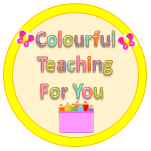It’s important to know how to communicate with a child who is nonverbal as it will help a child’s social and emotional development.
Instead of feeling excluded, they’ll feel a sense of connection and trust with you and their family members or peers, which will foster a sense of inclusion. This will gradually reduce their anxiety levels, promote their independence and foster a space for learning.
No child should ever feel devalued and unloved. Knowing how to communicate with your child, especially one who is nonverbal will help them feel secure in your care.
The following are simple ways to communicate with a child who is nonverbal.
Actionable Steps:
#1. Focus on Nonverbal Cues
Watch your child’s body language, facial expressions, or gestures to understand what they are trying to say. It’s also important to note a child’s body, head or eye movement. Often, a child’s nonverbal cutes hold more meaning than spoken or written words.
#2. Speak Clearly
Use short and simple phrases when speaking and pair it up with hand gestures or visual aids as is mentioned in the following step.
Ensure that your tone is calm as well.
For example, you can say, “it’s time to do your homework” by pointing to the child’s textbook.
#3. Use Visual Aids
Use pictures or symbols with simple text to explain your schedule of the day. Use this same method to create a rewards chart for completing tasks or breaking down large assignments to smaller chunks when necessary.
If you’d like a visual schedule that’s already made for you, CLICK HERE or on the following image.
#4. Try Alternative Communication Methods
Learn some basic sign language so that you can communicate easily with your child. If it’s too complex for you, integrate visuals like picture cards to convey your message. It is also beneficial to work with a speech-language pathologist, who can guide you with understanding the communication method that works best for your child. They may also be able to provide you with speech-generating devices or apps.
Recap:
Let’s recap really quickly. Today, we looked at the following:
- The importance of learning how to communicate with a child who is nonverbal.
- Four ways to communicate with a child who is nonverbal: focus on nonverbal cues, speak clearly, use visuals, and try alternative communication methods.
Free Resources:
For a taste of the resources that were mentioned in step two, check out the following resource in my FREE Education Resource Library.
Teach your little ones how to make good choices with the following FREE Resource:
Next Steps:
If you found this video beneficial, would you do me a favor? Share this with your family, your friends, your loved ones, your co-workers or someone who you think could benefit from this. Thank you!
You’re welcome to join us inside ADHD and Autism Self Regulation by CLICKING HERE or on the fallowing image.
I’ll see you next Friday at 5:30pm PST.
Until I see you next time, remember to create, experience & teach from the heart.
Take care,
Charlotte
Disclaimer: I’m a teacher and a parent. I’m not a medical professional, so please don’t take this as medical advice. The advice that I provide in my videos and online are strategies that I have used in my own class or at home that have worked beautifully.



